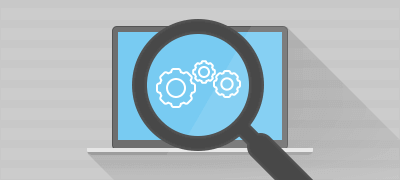Functional Testing Services

Functional testing is done to guarantee that your software performs according to all your functional and business requirements. It checks what features are implemented and their correct work. In other words, this is a way to find out whether developed software can perform the necessary tasks under certain conditions.
Functional testing covers 95% of the requirements and expectations regarding product quality. It means that after functional testing services, your application will be almost completely protected from malfunction, and users will be satisfied with the quality.
We perform functional testing that covers the following testing types:
Regression testing
helps to ensure that your system functions properly after any сhanges (adding new features, bug fixes, any changes in the existing feature).
Unit testing
We also test separate components (units) of a program for correct functioning to guarantee the best quality of the whole system.
Integration testing
We test for proper interaction between the components of a system and verify that the data is processed correctly.
Smoke testing
A cycle of tests is conducted to verify product functionality after every product build to detect and remove critical bugs timely, thus saving time on build testing.
Security testing
Tests of software products to protect your product from security vulnerabilities. We test connection security, data security, and access security.
System testing
System testing is performed to make sure that your integrated and ready for use system meets the functional requirements.
Mobile app testing
We check out whether mobile apps work flawlessly on different mobile devices and platforms.
Documentation testing
We make sure that documentation is of high quality and meets the specified requirements (completeness, absence of inaccuracies and ambiguities, project feasibility, etc.).
Installation testing
We ensure your system installs correctly, behaves smoothly during the upgrade, and shows no problems during removal.
Stress testing
We test a system under high loads for failures and ensure its ability to restore in case of a crash.
Usability testing
After usability testing, we improve user experience (UX) and make them happy with your intuitive and easy to use solution.
Providing test coverage
We check out how a set of tests meets product requirements and analyze whether the conducted tests cover the entire code of the developed part of a product.
How Functional Testing is Carried Out
In a nutshell, the process of functional testing is described with the following model: QA specialists, based on the analysis of the documentation and customer requirements, define the approach and methodology of testing. After that, they establish a work plan, form test cases, and make checklists. And then they proceed to the process of testing, which results in a report. Let’s consider this process in more detail.
Step 1 – Requirements analysis
This step includes not only a careful reading of the project documentation, but also communication with developers, business analysts, and customer representatives. A QA specialist will definitely know what will be better for the application.
Step 2 – Preparing a test plan, checklist and test suite with cases
A test plan is a document, according to which the tester describes the sequence of actions and plans his work. Based on of the checklist and cases, direct testing is carried out, which is the next stage.
Step 3 – Product testing
It includes not only testing ease of use and functionality of the program based on the requirements specified in the test task, but also testing abnormal system behavior (negative testing), including checking the system’s resistance to various influences, validating incorrect data, and handling exceptional situations. In addition to functional testing, interface testing is also carried out, often cross-browser testing and API testing if necessary. These types of testing serve to smooth the differences between the application in different browsers and operating systems (cross-browser and cross-platform testing), thereby making your application accessible to a wider range of users.
Step 4 – Preparing a final report
In addition to periodical bug reports, a final report is provided. It may vary slightly depending on the goals and to whom it is intended. In general, it carries information about the status of the product and its readiness for release.
Functional Testing Services of Any Software Type on Any Technology
XB Software has a diverse experience in testing completely different types of software. Since 2008, we worked with such domains as Education, Business Services, Financial Services, Logistics, Information, and others. Our expertise covers but is not limited to the following mobile and web solutions:
- Enterprise apps (ERP, CRM, BPM, etc.)
- E-commerce solutions
- IoT solutions
- Blockchain solutions
- BI solutions
- Big Data
- Web chats (audio and video)
- eLearning products
- and much more.
Thus, we provide functional testing services of any software type on any technology.
Tools and Technologies We Use for Functional Testing
For functional testing we use such tools as TeamCity, Selenium, Web Driver, Firebug, XPather, IE Developer Toolbar, JUnit, JMeter, VMWare, TestRail, Postman, JMeter, Gatling, Jing, Generatedate, Lipsum, Form Filler, Pairwiser, HTML and CSS validation, Test Object, Browserstuck, Mind Maps, TestLink, Bugzilla, Mantis, Jira, XBtrack bug tracking systems and some additional depending on the project.
Functional testing is necessary for any software development project.
Quality assurance specialists use various techniques that allow predicting how users will work with the system depending on their experience and the ultimate goals. The application logic and system response are tested in various situations.
As a result, a customer gets a stable, bugfree, and user-friendly system.


